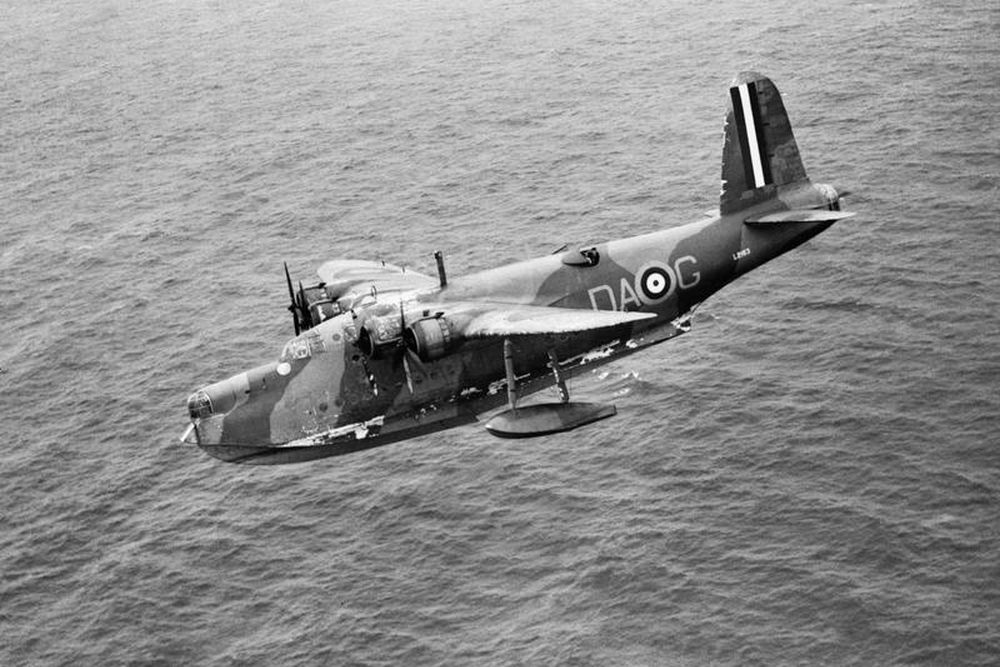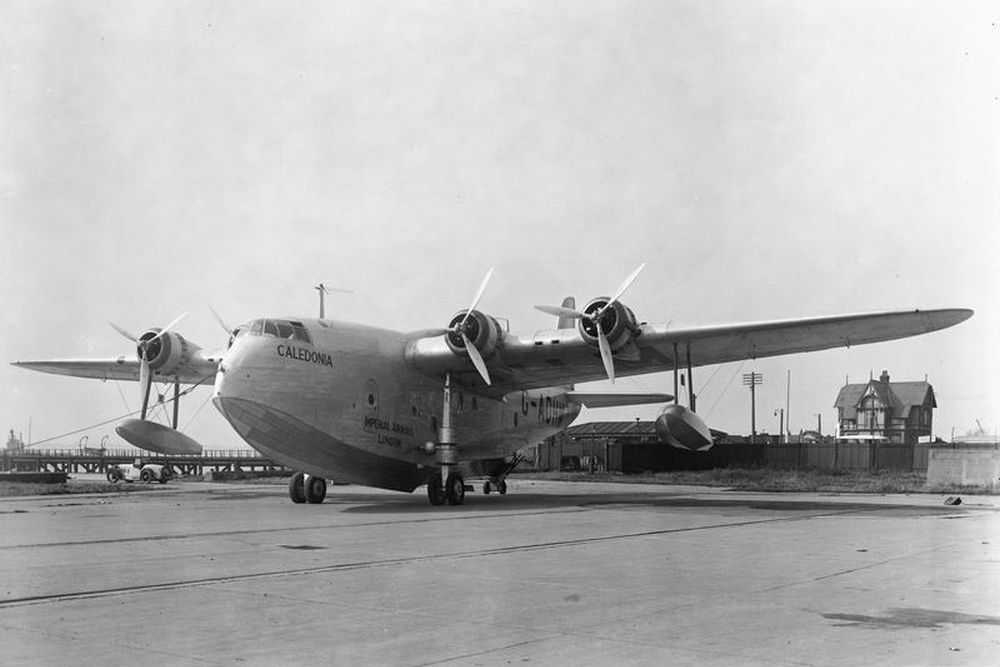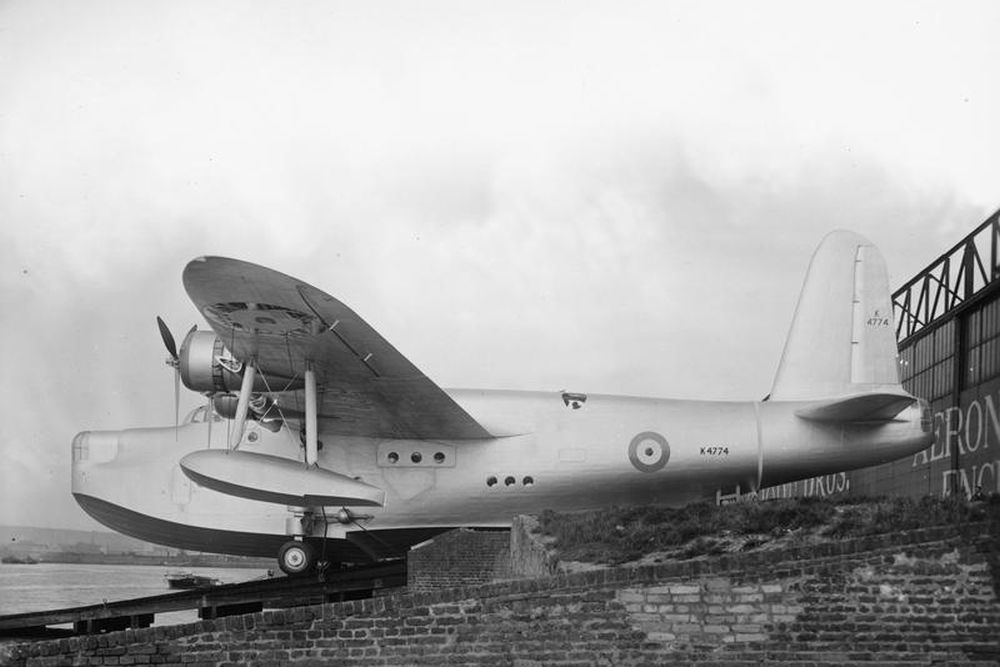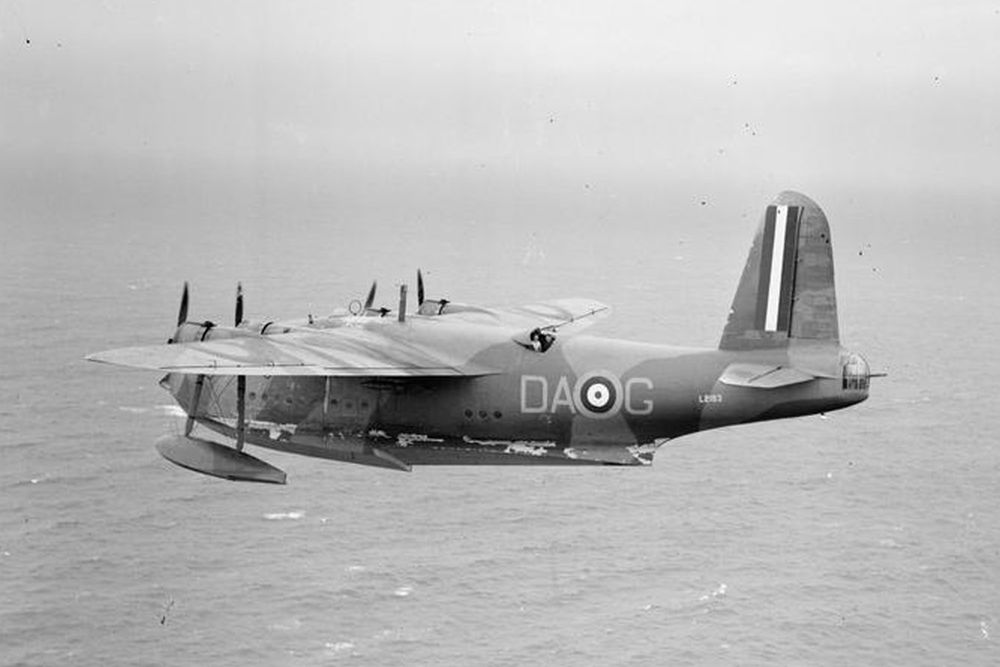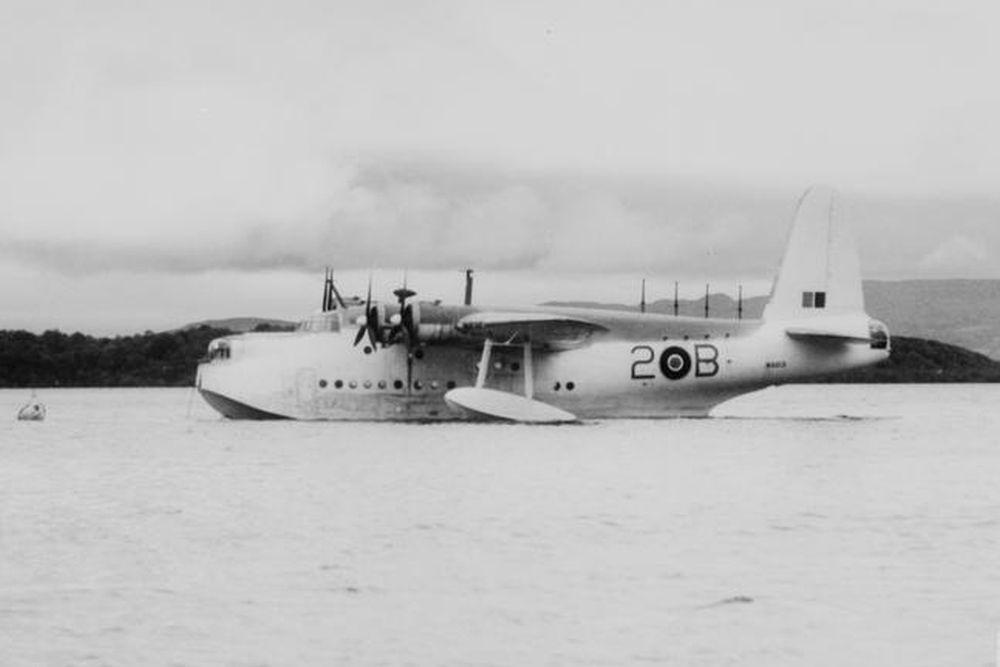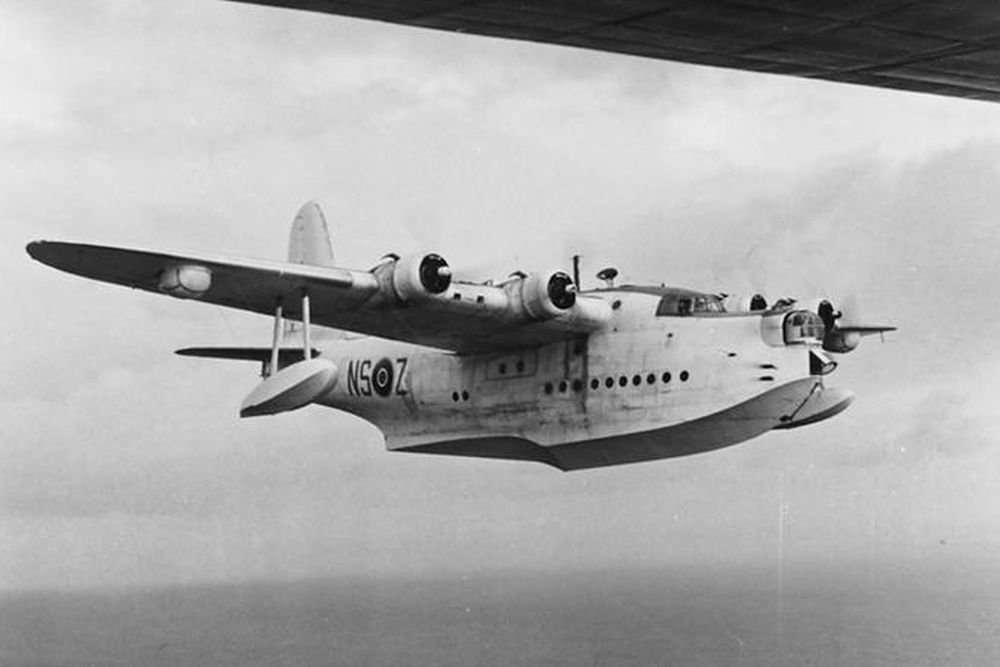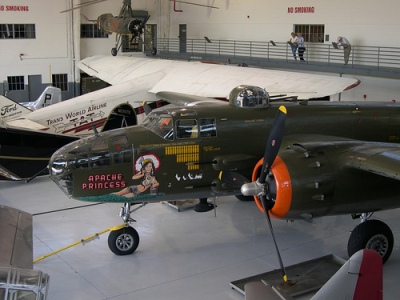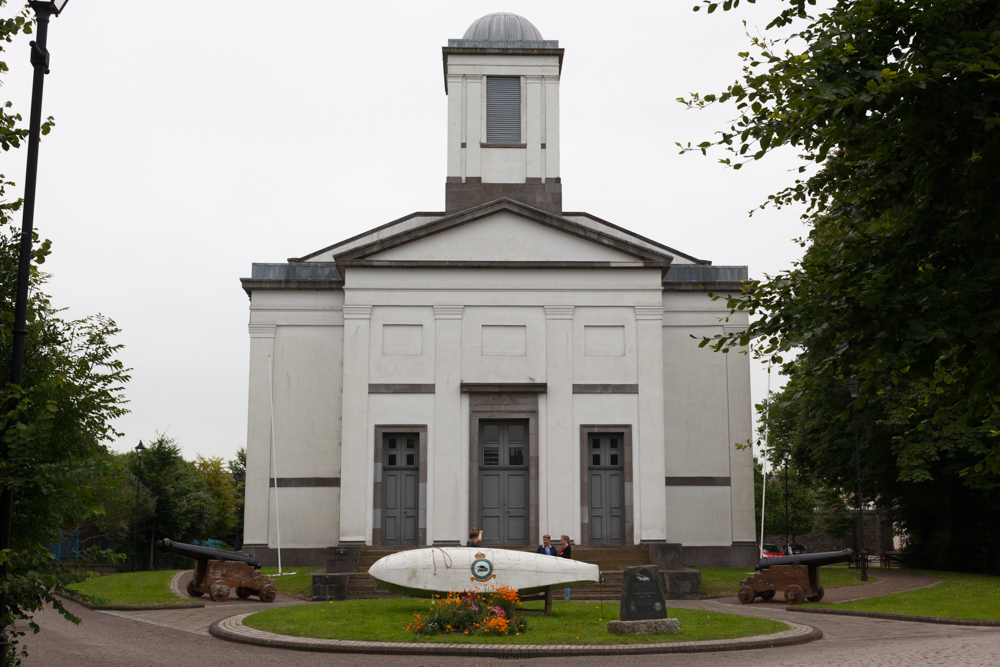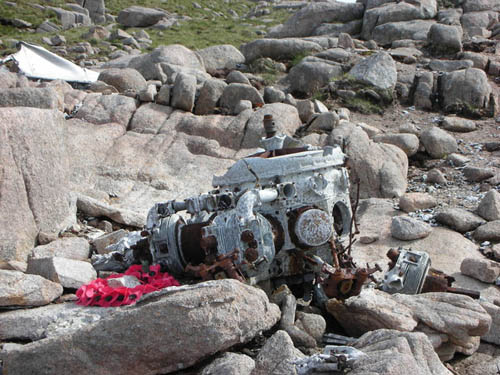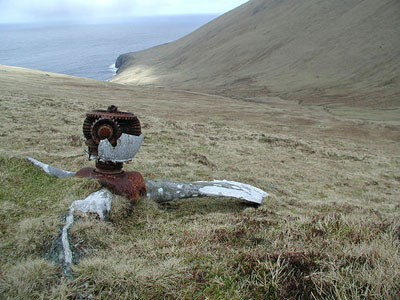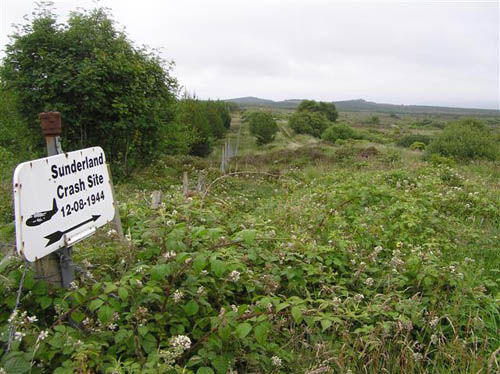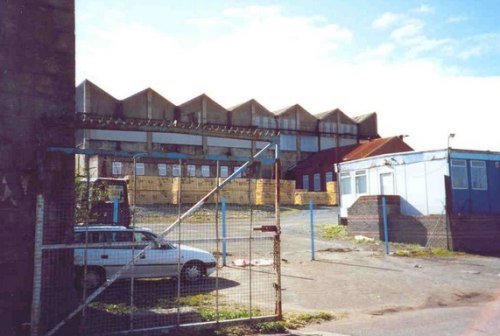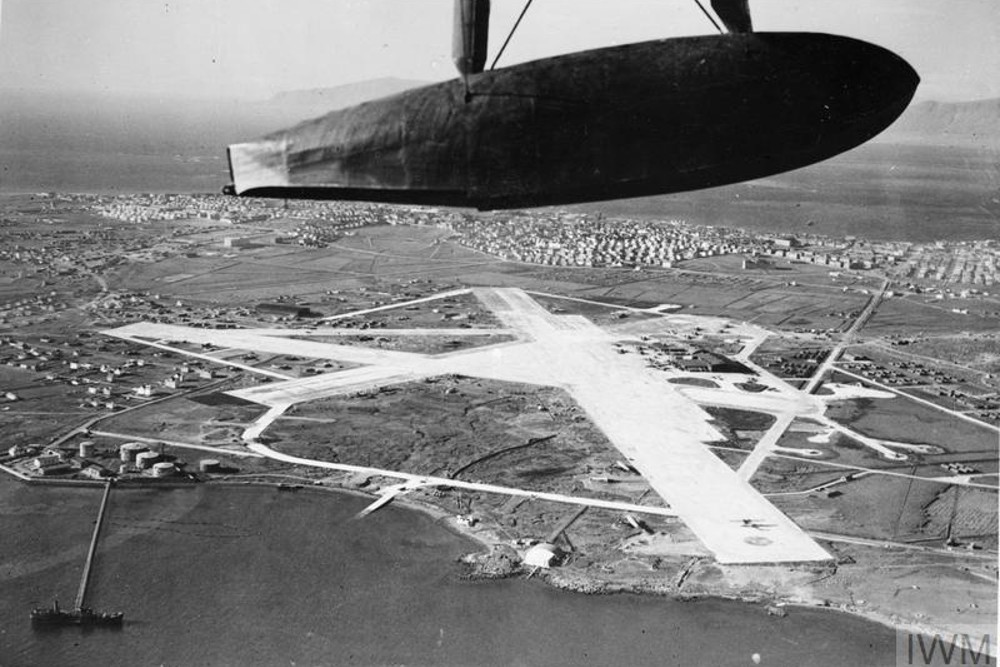Introduction
At the onset of World War Two, RAF Coastal Command was changing over from the Short Singapore to the new Short Sunderland for its maritime patrols. The aircraft was a direct derivative of the civil Short Empire seaplanes of Imperial Airways. They were large aircraft which were to play an important role in combat against for instance the German U-boats. The Sunderlands were a formidable gun platform of which the defensive capabilities were gradually increased during the war to such an extent that it really brought fear to U-boat commanders as well as to attacking German aircrews. The latter called respectfully called it Das fliegende Stachelschwein or the flying porcupine.
Definitielijst
- RAF
- Royal Air Force. British air force
- U-boat
- The German name for a submarine. German U-Boats (Submarines) played a very important role during the course of warfare until May 1943. Many cargo and passenger ships were torpedoed and sunk by these assassins of the sea.
Development
The Sunderland was a direct descendant of the Short Empire C class seaplanes of the 30s. A flying boat was developed under factory designation S.25 which could, based on the experience with the Empire aircrat, count on an immediate order of 21 units in March 1936. In 1933, the Air Ministry had issued specification R.2//33, inviting Short and Saunders Roe to construct two prototypes. Short was the only company which managed to complete a prototype on time.[1]
The design was directly derived from the Short Empire. Naturally, for military purposes, a number of adaptations had to be made. Nose and tail construction were adapted in order to accommodate an automatic gun turret. This meant the cockpit had to be moved further to the back. The hull was adapted to the altered construction and in order to compensate for the weight of the tail turret, the wings were slightly V-shaped. The hull had been split in two decks with the bomb bay situated on the upper deck. In order to enable the bombs to be dropped, rails were fitted on both sides of the fuselage beneath the wings. Bombs, depth charges or mines were shoved out on these rails and then dropped.[2]
For its defense, a twin-gun Frazer-Nash turret was fitted in the nose, the tail turret contained four machineguns and there was a position for a hand-held machinegun on each side of the upper hull.
The first prototype - K 4774 - made its maiden flight on October 16, 1937 and was not an outright success. The engines used were the Bristol Pegasus X, an older model than had been intended in the design. After modification, the prototype was propelled by four Bristol Pegasus XXII engines of 1,010 hp each. This aircraft turned out to be a magnificent performer.[3]
Overview of types:
| Type | prototype | 1 |
| Sunderland Mk I | 1st version; 4 Bristol Pegasus XXII, | 75 |
| Sunderland Mk II | 2nd version; Bristol Pegasus XVIII, | 43 |
| Sunderland Mk III | as Mk II; increased range | 461 |
| Sunderland Mk IV | 4th version; B Hercules XIX | 6 |
| Sunderland Mk V | 5th version; 4 P&W R-1830-90 | 155 |
Short Sunderland Mk 1
The Sunderland Mk I was propelled by the same engines as the prototype. The first aircraft were delivered to the RAF in the summer of 1938, replacing the Short Singapores of No. 230 Squadron in Singapore and No. 210 Squadron at Pembroke, England. At the outbreak of the war in September 1939, another two squadrons had switched to the Sunderland, followed by another three during the first months of the war.
The Australian air force ordered nine planes but they designated them A18. On September 11, 1939, No. 10 RAAF Squadron stationed in England received its first plane and No. 461 RAAF Squadron, also stationed in England, a short time later.
The first task of the Sunderland weren't the famous anti U-boat patrols however but mainly rescuing crews of torpedoed vessels. On July 17, 1940, the first U-boat fell victim to an Australian Sunderland. In the course of time, a second machinegun was installed in the nose turret in order to enhance its defensive capability.
Technical data
| Type | Short S. 25 Sunderland Mk I |
| Task | Maritime reconnaissance |
| Crew | 10 |
| Wingspan | 113feet |
| Wing surface | 187sq yard |
| Length | 85feet |
| Height | 33feet |
| Weight | Empty 30,600, max 60,000lbs |
| Propulsion | 4 Bristol Pegasus XXII, 1,010hp |
| Speed | Max ? cruise ? mph |
| Range | ?miles |
| Ceiling | ?feet |
| Armament | 7 7,7 machineguns |
| Bomb load | 2,000lbs |
| Produced | 75 |
Definitielijst
- RAF
- Royal Air Force. British air force
- Squadron
- A military unit in the Belgian navy usually six to eight small ships operating together under one command. The smallest military unit in the Dutch air force of about 350 men. In most countries is the designation of a military unit thesize of a company. It is either an independent unit, such as a battery, or part of a bigger Calvary unit. In the air force it is the designation of a unit of aircrafts.
- U-boat
- The German name for a submarine. German U-Boats (Submarines) played a very important role during the course of warfare until May 1943. Many cargo and passenger ships were torpedoed and sunk by these assassins of the sea.
Short Sunderland Mk II
Some modification to the wings enabled stronger Bristol Pegasus XVIII engines to be installed. This Mk II differed from the Mk I on several points. The hand-held machineguns on the flanks were gradually replaced by a twin-gun dorsal turret.
The first Mk II was offered in May and delivered to the RAF in August 1940. Another novelty fitted to the Mk II in the course of time was an ASV Mk II air-surface radar. To this end, a number of characteristic aerials was fitted to the top of the fuselage and the flanks.
Technical data
| Type | Short S.25 Sunderland Mk II |
| Task | Maritime reconnaissance |
| Crew | 13 |
| Wingspan | 113feet |
| Wing surface | 187sq yards |
| Length | 85feet |
| Height | 33feet |
| Weight | Empty ?, max ? |
| Propulsion | 4 Bristol Pegasus XVIII, 1,065hp |
| Speed | Max 207, cruise ?mph |
| Range | 2,691 miles |
| Ceiling | 17,881feet |
| Armament | 8 7.7mm machineguns |
| Bomb load | 2,000lbs |
| Produced | 43 |
Definitielijst
- radar
- English abbreviation meaning: Radio Detection And Ranging. System to detect the presence, distance, speed and direction of an object, such as ships and airplanes, using electromagnetic waves.
- RAF
- Royal Air Force. British air force
Short Sunderland Mk III
The Sunderland Mk III followed in 1942 and was able to carry a larger fuel load, considerably increasing its range. Its maiden flight was made in June 1942. This would be the most important production version. When early 1943 it became clear that U-boats protected themselves better against aerial attacks by installing AA guns, the Mk III were adapted accordingly. At the front of the fuselage, two additional fixed, forward firing machineguns were fitted on both sides. These were operated by the pilot so the deck of the U-boat could be 'wiped clean' after which the vessel could be attacked by bombs or depth charges.
The Canadian squadrons Nos. 422 and 423 operated from England, Scotland and Ireland with 74 Mk II and III aircraft in total. In addition, Australian squadrons Nos 10 and 461 flew both versions as well.
Gun emplacements from various Mk III aircraft were removed to convert them to unarmed transport aircraft. These were operated by BOAC (today British Airways) to carry mail and other goods. These aircraft performed magnificently and it was therefore decided to construct an additional version of the Sunderland, based on the airframe of the Mk III. This became the Short S.25/V Sandringham. Whereas the adapted Mk III aircraft could carry only 6 passengers, the interior of the Sandringham had been adapted to such an extent, it actually had been converted to a passenger aircraft carrying 24 persons by day and - equipped with beds - 16 on night flights.
Technical data
| Type | Short S.25 Sunderland Mk III |
| Task | Maritime reconnaissance |
| Crew | 13 |
| Wingspan | 113feet |
| Wing surface | 187sq yards |
| Length | 85feet |
| Height | 32feet |
| Weight | Empty 33,000, max 58,000lbs |
| Propulsion | 4 Bristol Pegasus XVIII, 1,065hp |
| Speed | Max 212, cruise 178mph |
| Range | 1,780 to 2,900miles |
| Ceiling | 15,000feet |
| Armament | 12 7.7mm machineguns |
| Bomb load | 2,000lbs |
| Produced | 461 |
Definitielijst
- U-boat
- The German name for a submarine. German U-Boats (Submarines) played a very important role during the course of warfare until May 1943. Many cargo and passenger ships were torpedoed and sunk by these assassins of the sea.
Short Sunderland Mk IV/Seaford
The planned Sunderland Mk IV was constructed with so many adaptations, it actually turned into a brand new design. Therefore the aircraft was given a new designation: Short S.45 Seaford. The plane was specifically designed for operations in the Far East[4]
The airplane had become considerably larger, heavier and stronger than the original design. For propulsion, four Bristol Hercules XIX engines of 1,720hp each were selected and the defensive armament was drastically expanded. However, the aircraft came too late to enter service during the war. Only a few planes were built and because of the end of the war, supplementary orders were cancelled. The six planes that actually had been completed were converted after the war to transport aircraft for BOAC and renamed Short Solent.
Technical data
| Type | Sunderland Mk IV/Seaford |
| Task | Maritime reconnaissance |
| Crew | ? |
| Wingspan | 113feet |
| Wing surface | 165sq yard |
| Length | 89feet |
| Height | 34feet |
| Weight | Empty 45,000, max 75,000lbs |
| Propulsion | 4 Bristol Hercules XIX, 1,720hp |
| Speed | Max 242, cruise 207mph |
| Range | 3094miles |
| Ceiling | 13,000feet |
| Armament | Upper turret 2 20mm guns |
| Nose turret | 2 12.7 machinguns |
| Sides of nose | 4 7.7 machinguns |
| Side hatches | 2 12.7 machinguns |
| Tail turret | 2 12.7 machinguns |
| Bomb load | 2,000lbs |
| Produced | 6 |
Short Sunderland Mk V
The Sunderland Mk V was the last production model of the Sunderland family. The aircraft was equipped with the stronger and more reliable Pratt & Whitney Twin Wasp engines. The armament was strengthened as well by installing two 12,7 Browning machineguns next to the standard weapons on either side. The Mk V was delivered from March 1944 onwards.
Technical data Mk V
| Type | Short S.25 Sunderland Mk V |
| Task | Maritime reconnaissance |
| Crew | 13 |
| Wingspan | 113 feet |
| Wing surface | 187 sq yard |
| Length | 86feet |
| Height | 35feet |
| Weight | Empty 36,900, max 65,000lbs |
| Propulsion | 4 Pratt & Whitney R-1830-90 Twin Wasp |
| Speed | Max 213, cruise 133mph |
| Range | 2,690miles |
| Ceiling | 17,900 feet |
| Armament | 10 7.7, 2 12.7 machineguns |
| Bomb load | 2,000lbs |
| Produced | 155 |
Notes
- Klaauw, 1977, p. 50
- Klaauw, 1977, pag. 50
- Klaauw, 1977, p 50
- Klaauw, 1977, pag. 52
Definitielijst
- Browning
- American weapon’s designer. Famous guns are the .30’’ and .50’’ machine guns and the famous “High Power” 9 mm pistol.
Information
- Article by:
- Wilco Vermeer
- Translated by:
- Arnold Palthe
- Published on:
- 02-09-2023
- Last edit on:
- 22-06-2024
- Feedback?
- Send it!
